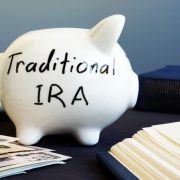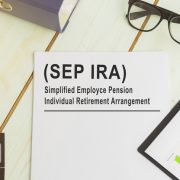How Does a Self-Directed Traditional IRA Work?
When you look at the retirement account landscape, it is easy to see why so many people choose a Roth IRA. Using after-tax money for retirement has a lot of benefits; namely, that you will not have to pay taxes on the money you withdraw from the account if certain conditions are met. But that leaves us with one question: what about the Self-Directed Traditional IRA? If the Roth IRA is so powerful, why would any investor use a Traditional IRA instead?
Every person’s situation is different, and we are not here to give specific financial advice. However, we can talk about what makes a Self-Directed Traditional IRA appealing for some investors, as well as how the account works. Here is what you will need to know.
The Unique Features and Benefits of the Self-Directed Traditional IRA
It can be difficult to wrap up everything a Self-Directed Traditional IRA can do into one sentence. That is why we have broken it down into a few bite-sized points:
- For people who are eligible to deduct their current contributions to a Self-Directed Traditional IRA and believe that their tax rate during retirement will be lower than their current tax rate, it is an easy way to save money. It simply requires meeting the criteria for deducting those contributions and then making the contributions for the current tax year.
- For some individuals, it is possible they are not eligible for a Roth IRA. Remember that a Roth IRA comes with specific requirements. In that case, an investor might turn to a Self-Directed Traditional IRA to find tax benefits on the money they set aside for retirement.
- With self-direction, you will be able to invest in a wide range of assets beyond the typical assortment of funds that come when you do not use a self-directed retirement account.
- You can still make contributions to a Self-Directed Traditional IRA if your earnings exceed the limits—however, those limits make it so that those contributions are no longer tax-deductible. This means that a Traditional IRA does have some flexibility when it comes to personal finance requirements, even if it is not an unlimited amount of flexibility.
With the Traditional IRA, you will find that the contribution limits are similar to those of the Roth IRA. The key difference is that the requirements to be eligible for the account will be different, as noted above.
Why Consider Self-Direction?
Why consider self-directing a retirement account? For many people, the answer can be quite different. But the general answer is that people enjoy the freedom that comes with self-directing an account because it means they are capable of investing in a wide range of retirement asset classes. With a self-directed account, investors can put retirement money into real estate assets, precious metals, tax liens, private notes, and more. In other words, it is possible to use a self-directed account to build a broader, more diversified portfolio than simply putting money in the stock market through traditional retirement investing methods.
With a Self-Directed Traditional IRA, for example, an investor can begin putting money into these alternative asset classes. They might also use more traditional investments such as stocks. It is really up to the investor. The point: with self-direction, the investor has a broader range of choices. And by working with a well-reputed Self-Directed IRA administration firm, they will be able to ensure that the paperwork and administration on the account are up to par.
Interested in learning more about Self-Directed IRAs? Contact American IRA, LLC at 866-7500-IRA (472) for a free consultation. Download our free guides or visit us online at www.AmericanIRA.com.










